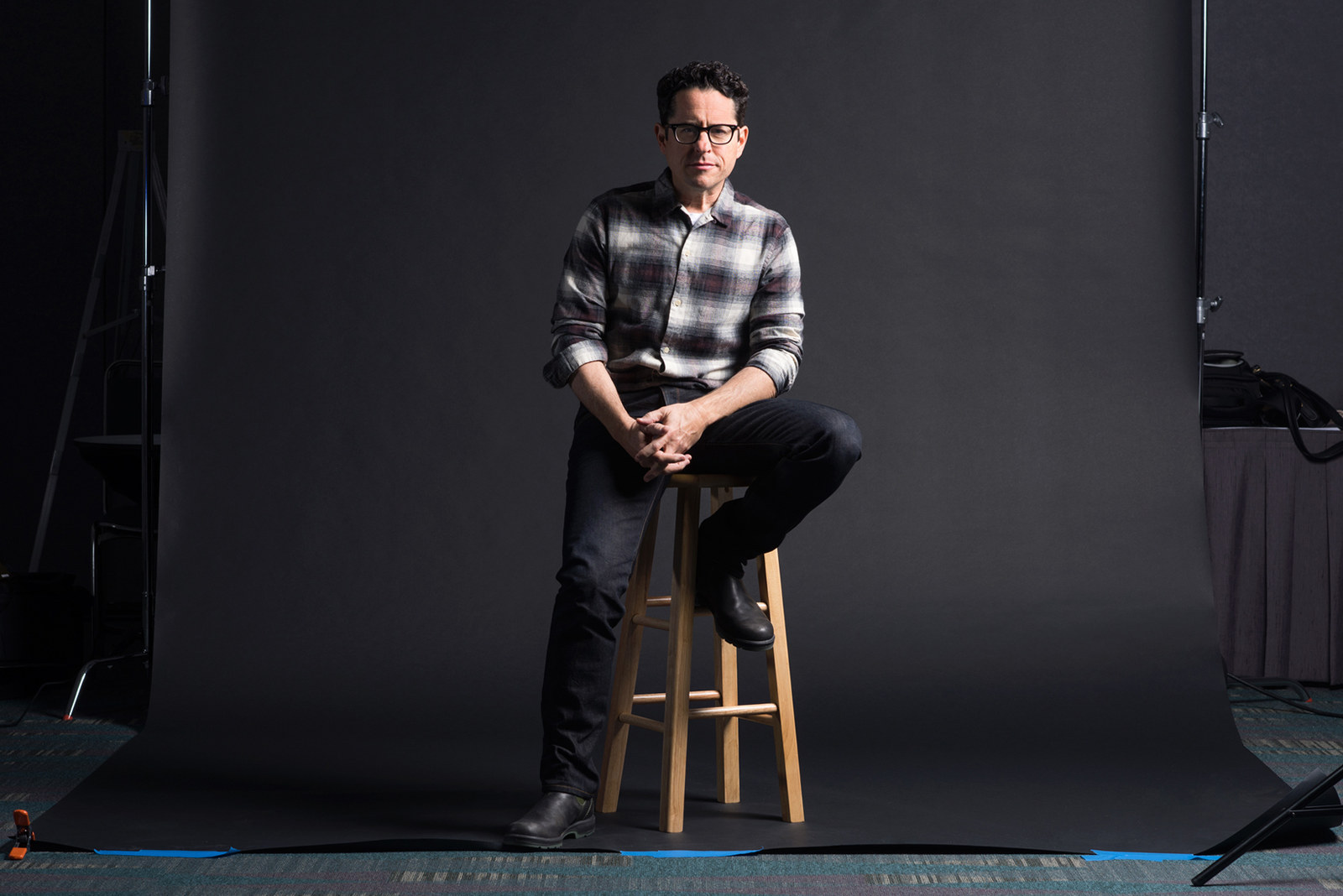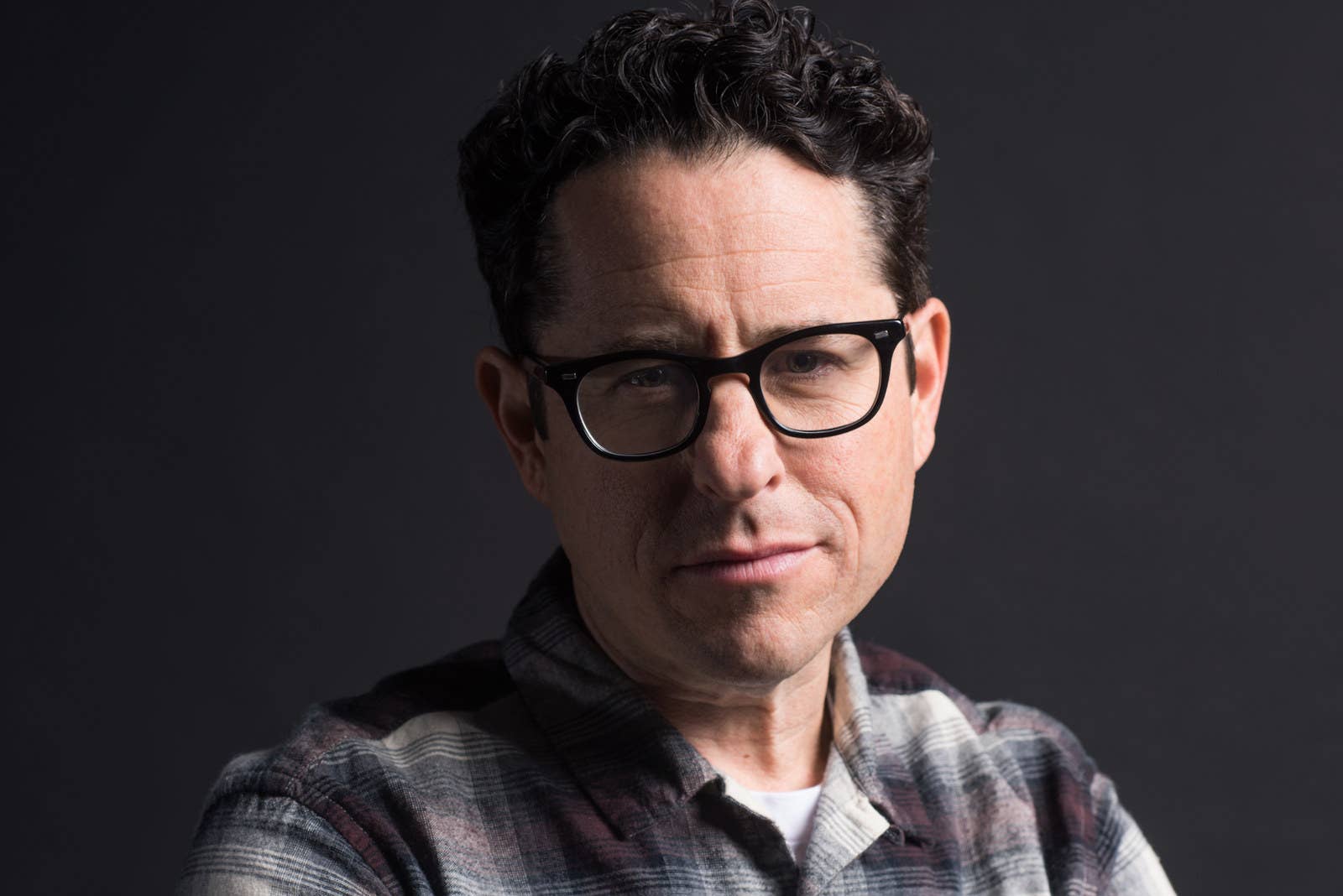
J.J. Abrams began his film career as a kid, making his own movies around his house in Los Angeles. Before he graduated from college at Sarah Lawrence, he had sold his first screenplay (1990's Taking Care of Business), and by the end of the ’90s, he had co-created The WB's Felicity — the start of Abrams' extensive success in television. (It was also the kickoff of his professional directing career: Abrams directed a two-part episode from Felicity's first season, in which Felicity's cheerful stalker from home gets hit by a bus right in front of her.)
Abrams has many years of work ahead, but directing Star Wars: The Force Awakens does represent a culmination for him: of his adoration of film, and for these films in particular. Abrams talked with BuzzFeed News at the recent Force Awakens press junket about what led him here, what he's learned from his past movies, and what he could have done better.
Mission: Impossible III (2006)
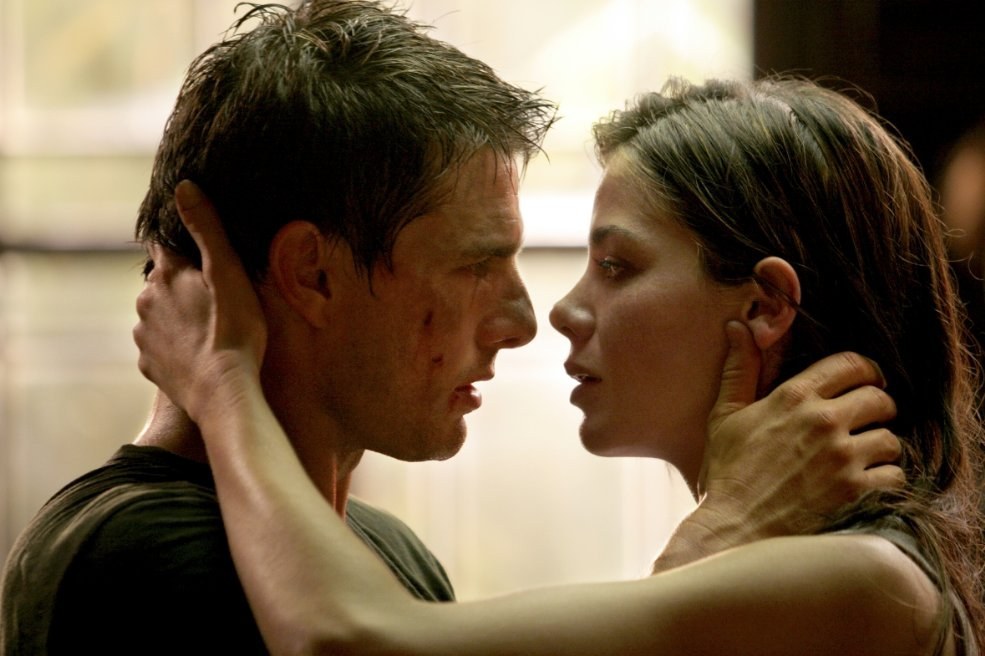
The first Mission: Impossible, directed by Brian De Palma, was released in 1996, and made nearly half a billion dollars worldwide; the second film, this time by John Woo, came out in 2000, and increased that total.
But developing the third entry in the Mission: Impossible franchise appeared to fall under a curse in the early 2000s, first when David Fincher dropped out as director, then when Fincher's successor, Joe Carnahan, also quit: bitterly. By 2005, Tom Cruise, was in Oprah-couch-jumping free fall — and there had even been a report in the New York Times that Paramount was considering killing the movie entirely.
Cruise, a fan of Alias, approached Abrams, who had never directed a feature before. "I was so excited," Abrams said. But when he read the existing script, he realized, "I just could never have directed it — it just wasn't something I would have known how to do." He told Cruise and producer Paula Wagner that he instead wanted to write a more personal story about Ethan Hunt. "I pitched the idea of getting to know who Ethan Hunt was when he wasn't the superstar spy," Abrams said. "What is he like as a man? What is he like when he's home?"
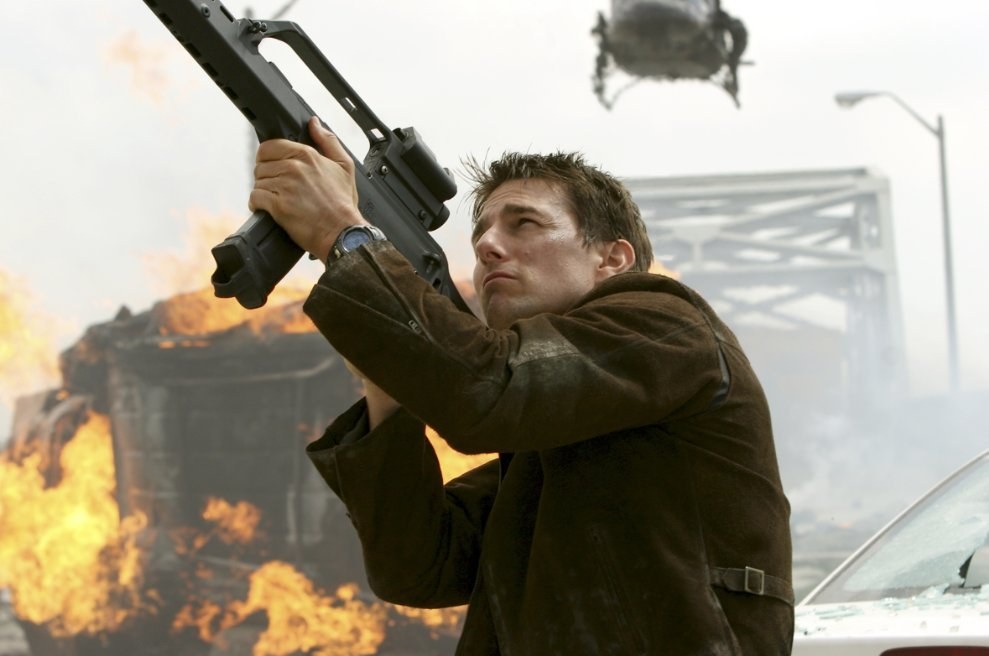
And so, Abrams co-wrote that version with his frequent collaborators Alex Kurtzman and Roberto Orci. Of course, it had, as Abrams put it, "crazy chases and action adventure and all sorts of cool gadgets and all the things you need in Mission: Impossible," but he also introduced the character of Julia (Michelle Monaghan), the love of Ethan's life, to whom he is lying about his job (until she becomes imperiled by it). It wasn't dissimilar to Alias, actually — a spy has to choose between having a personal life and their job, with potentially deadly stakes. "I've often tried to play with intimacy and character drama and comedy — and then spectacle," Abrams said.
There was plenty of spectacle, with massive action sequences, the likes of which Abrams had not experienced previously. "The learning curve was significant in some ways because it was the first movie I ever did, and it was a lot to learn quickly," Abrams said. "But it was also learning with some of the best in the business, and someone, in Tom Cruise, who is just such a driven and knowledgeable force of nature."
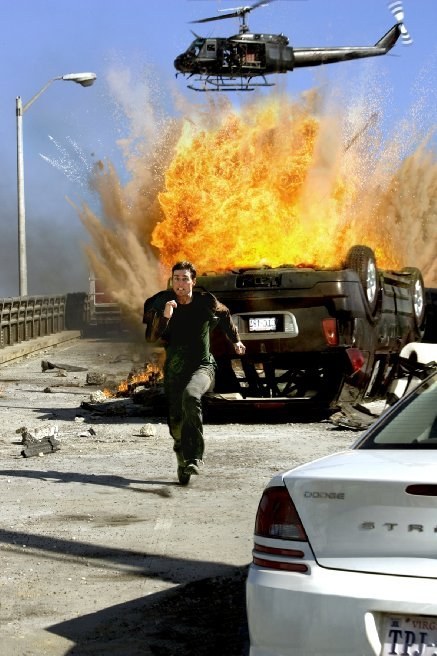
Abrams remembered in particular planning the scene in which Ethan and Luther (Ving Rhames) are in a convoy transporting the film's villain, Davian (Philip Seymour Hoffman), across the Chesapeake Bay Bridge in Virginia. The bridge is attacked by Davian's allies from the air, and they eventually free him — but not before Ethan tries to thwart their plan. Instead of relying solely on CGI and shooting the scene on a soundstage with green screen, Abrams found a hilltop location in Calabasas, California, where they could build a part of the bridge. "I wanted to use real skies," he said. If the camera was kept low, they could just shoot the stunt-and-explosion-filled scene as it unfolded, and then add in the water later. Abrams, who had grown up making his own movies, loved it. "It was one of those amazing opportunities to see that on a scale that wasn't just your group of friends with a camera that you were renting, but rather a pro, triple-A, amazing crew being open to trying things and figuring out how to make it work," he said. "It ended up being as challenging as any other sequence, but one of the most fun sequences to work on in the movie."
Abrams had made the leap from television to directing a movie with a reported $150 million budget. It was both "hugely different" and "the same exact thing" from what he was used to. "It doesn't matter if you're shooting on the banks of the river in Rome across from the Vatican or if you're shooting in your parents' bedroom. It's always: What are we doing here? What is the story?” he said. “It was wildly, like, old-pair-of-shoes familiar."
Star Trek (2009) and Star Trek Into Darkness (2013)
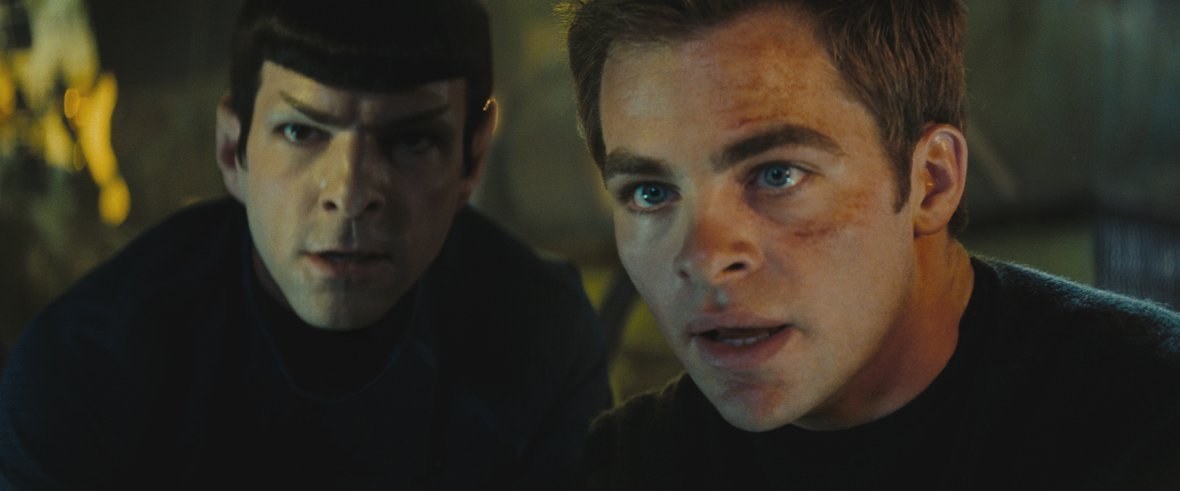
In his reimagining of Star Trek, Abrams found the intimacy he favors in the relationship between James T. Kirk (Chris Pine) and Spock (Zachary Quinto) — at first contentious, and then a true partnership and friendship. For spectacle, Abrams had to adjust his sights upward from even from the ambitious Mission Impossible III, which was, after all, terrestrial: He estimates that Star Trek had approximately 1,300 visual effects. "It was definitely an education in scale," he said. "When you're doing a space adventure and you do an establishing shot, it needs to be a planet — it's not just a building."
But one of Abrams' first challenges with Star Trek was casting. In his television work, Abrams had been credited with discovering Felicity's main cast (Keri Russell, Scott Foley, and Scott Speedman), and Alias's leads (Jennifer Garner, Bradley Cooper, and Michael Vartan), but coming into the Mission: Impossible franchise, the main roles were already set. With Star Trek, he was starting from scratch to find an ensemble to inhabit the iconic characters created by Gene Roddenberry in the original 1960s television series. He wanted, he said, to find actors "you could believe were spiritually on the same page as every character you knew."
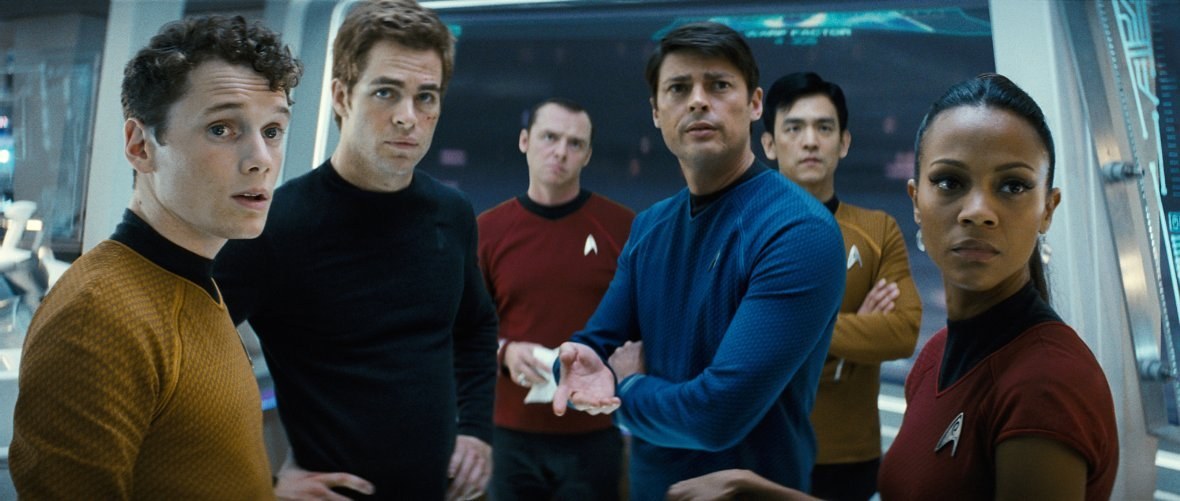
"The story of our film was that a new timeline arose out of an event where the character of Spock goes back in time, therefore the characters that were going to come together were literally the characters that people knew from the show," Abrams continued. "So we were 100% taking Gene Roddenberry's lead."
That meant, of course, also following in Roddenberry's revolutionary footsteps in the cast's diversity. "It was important to me, in that I very much appreciated what Roddenberry was doing in 1966, in a time when it was not common to have a multicultural, multiethnic cast — and having women in positions of authority and power," Abrams said. "Working on a movie like Star Trek, you learn how important those choices were to people who saw themselves in those shows in ways that they hadn't before. So it was something we were thrilled to get to continue."
The result was a blockbuster platform for Pine, Quinto, Zoe Saldana (as Uhura), and John Cho (as Sulu) — and Abrams' best-reviewed movie so far.

But his follow-up, Star Trek Into Darkness, did not receive the same across-the-board positive critical and fan response. The first movie was written by Kurtzman and Orci; they signed on to write the sequel, along with Damon Lindelof, Abrams' collaborator on Lost (who had been a producer of Star Trek). "I take full responsibility for this — I was encouraging the writers in certain directions, and we were working on the script and putting it together," Abrams said. "But by the time we started shooting, and this was literally at the very beginning of the shoot, there were certain things I was unsure of."
"Any movie, any story has a fundamental conversation happening during it," he continued. "There's a fundamental argument; there's a central question. And I didn't have it."
The first movie, according to Abrams, had a "very strong story" about "two orphans who are completely at odds, who then come to realize they need to work together to survive"; the second did not. Kirk and Spock remained the film's central characters, but, Abrams asked: "What was their issue? What was their dynamic? What was their problem?" He answered: "And it wasn't really clear."
"It was a little bit lightweight, ultimately, that Kirk was disappointed that Spock didn't feel that their friendship was as meaningful to him as it did to Kirk, which is sort of what we're saying," Abrams said. "And that Spock's arc is coming to unabashedly love his friend Kirk."

Then there was Khan. Word leaked out early that the canonical Star Trek villain would be featured in Into Darkness, and that Benedict Cumberbatch would be playing him. The spoiler-averse Abrams sought to put this genie back into the bottle, and said Cumberbatch was playing someone named John Harrison — true. But Harrison's real identity was Khan, and the attempt to fool fans only succeeded in angering them.
Abrams laughed while talking about it now: "At the end of the day, while I agree with Damon Lindelof that withholding the Khan thing ended up seeming like we were lying to people, I was trying to preserve the fun for the audience, and not just tell them something that the characters don't learn for 45 minutes into the movie, so the audience wouldn't be so ahead of it."
(He added: "But it was Simon Pegg who lied outright, and I adore him for doing so. I remember when I read that he basically said, 'He doesn't play Khan,' and I thought, Oh my god, Simon Pegg!")
Abrams did reshoots on Into Darkness, which he felt "helped a little bit here and there." But his problems with the final movie come back to its plot, which, he said, "was not anyone's fault but mine, or, frankly, anyone's problem but mine."
"I felt like, in a weird way, it was a little bit of a collection of scenes that were written by my friends — brilliantly talented writers — who I somehow misled in trying to do certain things. And yet, I found myself frustrated by my choices, and unable to hang my hat on an undeniable thread of the main story," Abrams said. "So then I found myself on that movie basically tap-dancing as well as I could to try and make the sequences as entertaining as possible. Thank god I had the cast that we have, who are so unbelievably fun to watch. And an incredible new villain in Benedict Cumberbatch."
"I would never say that I don't think that the movie ended up working," Abrams said. "But I feel like it didn't work as well as it could have had I made some better decisions before we started shooting."
Super 8 (2011)

Abrams wrote his only non-franchise movie himself, setting Super 8 — about a group of adolescent film geek friends who encounter an alien — in Ohio in 1979. Joe (Joel Courtney), the main character, is contending with the loss of his mother, who died in an accident at the local factory, and the emotional absence of his grieving father (Kyle Chandler). Though Abrams grew up in Los Angeles, a story about film-obsessed kids of the ’70s was his own. And it ended up being even more personal than he had intended — as he made Super 8, Abrams found out that his own mother had been diagnosed with brain cancer. "So over the course of making this movie that happened to be about a kid who lost his mother, I was losing my mother," he said.
It was Abrams' chance to work with Steven Spielberg, his childhood idol and professional mentor, and he used that as inspiration. "I wanted to tell a story that felt like an Amblin movie," said Abrams, citing Spielberg's production company that had made E.T. the Extra-Terrestrial, The Goonies, and Back to the Future, among many others. Getting Spielberg on board was not difficult, Abrams said: "I called Steven Spielberg and said, 'Would you want to do a movie called Super 8 about kids making movies?' And he said yes. Because he had done the same thing when he was a kid."
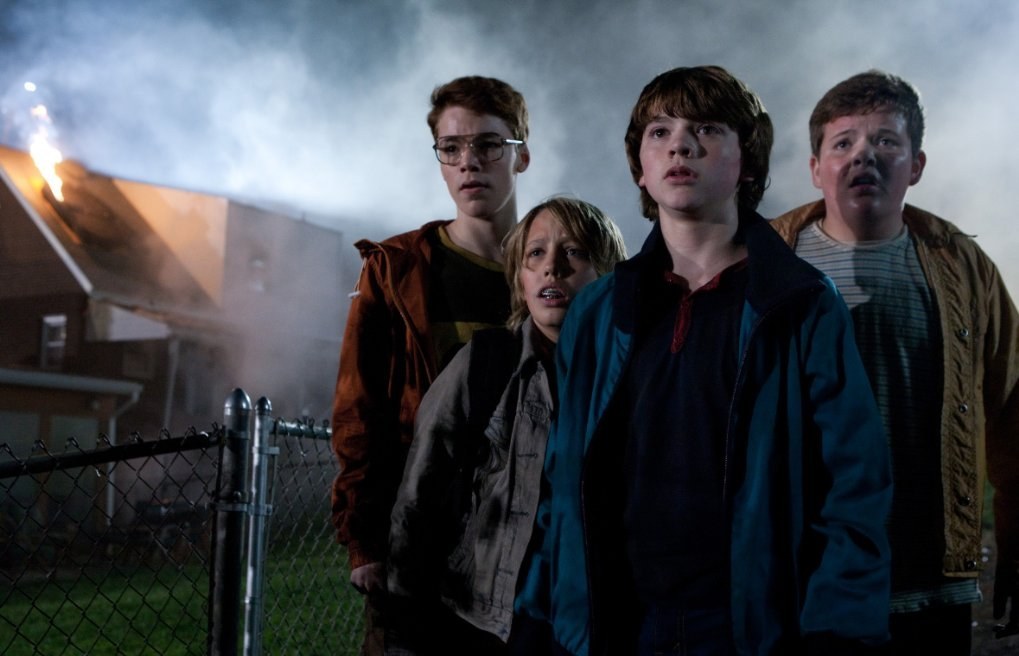
Abrams' favorite thing about Super 8 is the cast of kids — "mostly new actors and the undeniable Elle Fanning," he said. He also loved the location, as well as the effects, which were done by Industrial Light & Magic. His favorite scene, he said, is when the kids are trying to film their movie at the train depot, right before the colossal train crash that frees the alien, setting up Super 8's sci-fi plot.
But Abrams is critical of his own screenplay. "I felt somehow that I never quite solved how to reconcile the supernatural genre element with the human drama/comedy element."
"Certain things worked; certain scenes were good; certain relationships I was really happy with. But ultimately, I couldn't look anyone in the eye and say, 'The script is great,'" he said. "It wasn't that there was anything that I felt overtly didn't work, but I wish I had better integrated this alien/monster/sci-fi story with the emotional, sort of comedic story of these kids and what they were going through. It just felt like the last third of the movie didn't have the sense of inevitability that I wish it did."
Abrams, who may be his own worst critic, concluded by saying: "You know, you work as hard as you can to try to fix it as you're going, but I didn't feel like I was going in having nailed it."
Star Wars: The Force Awakens (2015)
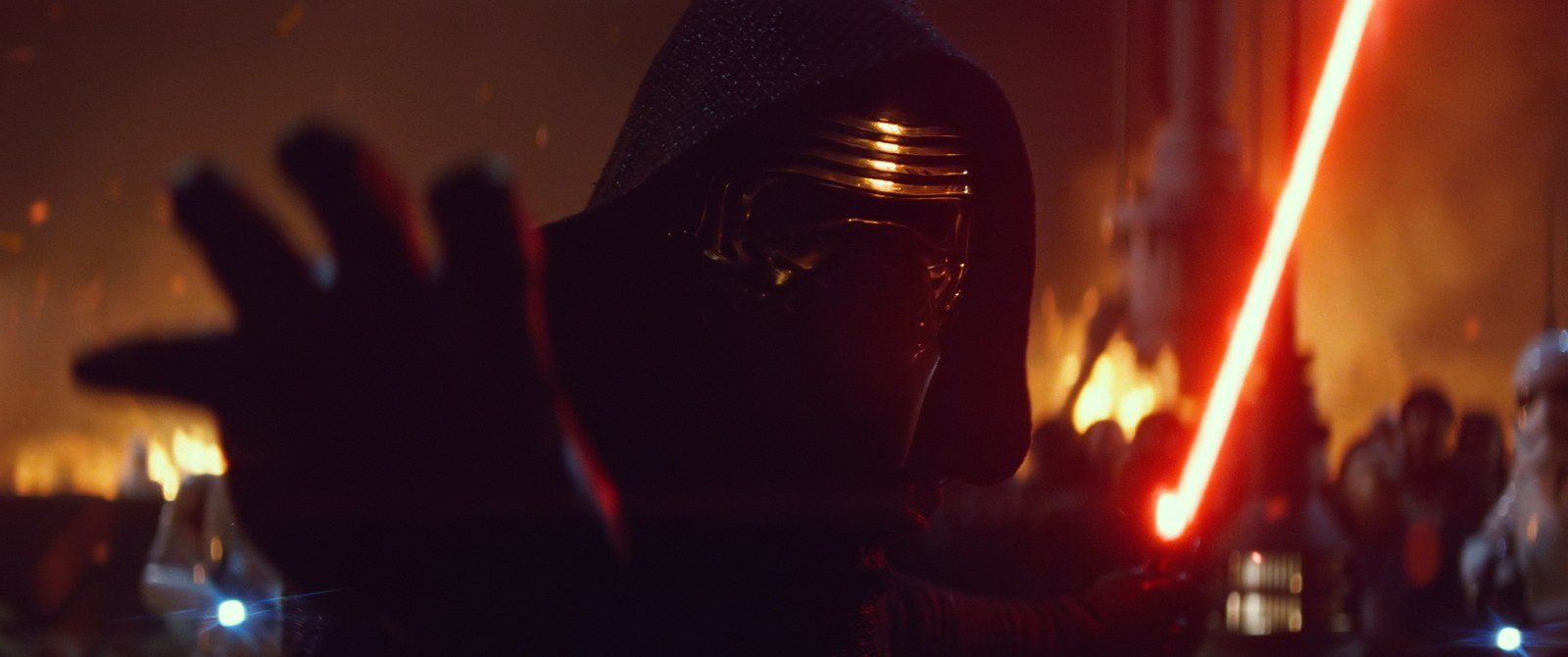
Abrams is 49, and when he was a kid, there were no VCRs. Whatever was in theaters, or happened to be playing on TV, those were your film choices. So he came up with a different way to experience movies, whether they were ones he had already seen, or ones he hadn't. "I would go on the weekends and buy a dozen soundtracks for 10 bucks," he said, "and I would lie on my floor with my headphones on listening to soundtracks that I would buy in the discount bin."
Since Alias, Abrams has worked with the composer Michael Giacchino, who has scored his film and television projects. Giacchino is, Abrams said, "like a brother, and someone I feel like I've known all my life and cannot wait to work with again in many capacities." But on Star Wars: The Force Awakens, Abrams was transported back to his childhood floor — because he got to work with John Williams, who’s scored everything from the Star Wars series to Jaws, Home Alone to Jurassic Park, Schindler's List to Harry Potter. "Working with John Williams was the chance to work with an absolute idol," Abrams said. "And maybe the greatest film composer in the history of cinema. That was something that was as exciting as any other aspect of doing this film."
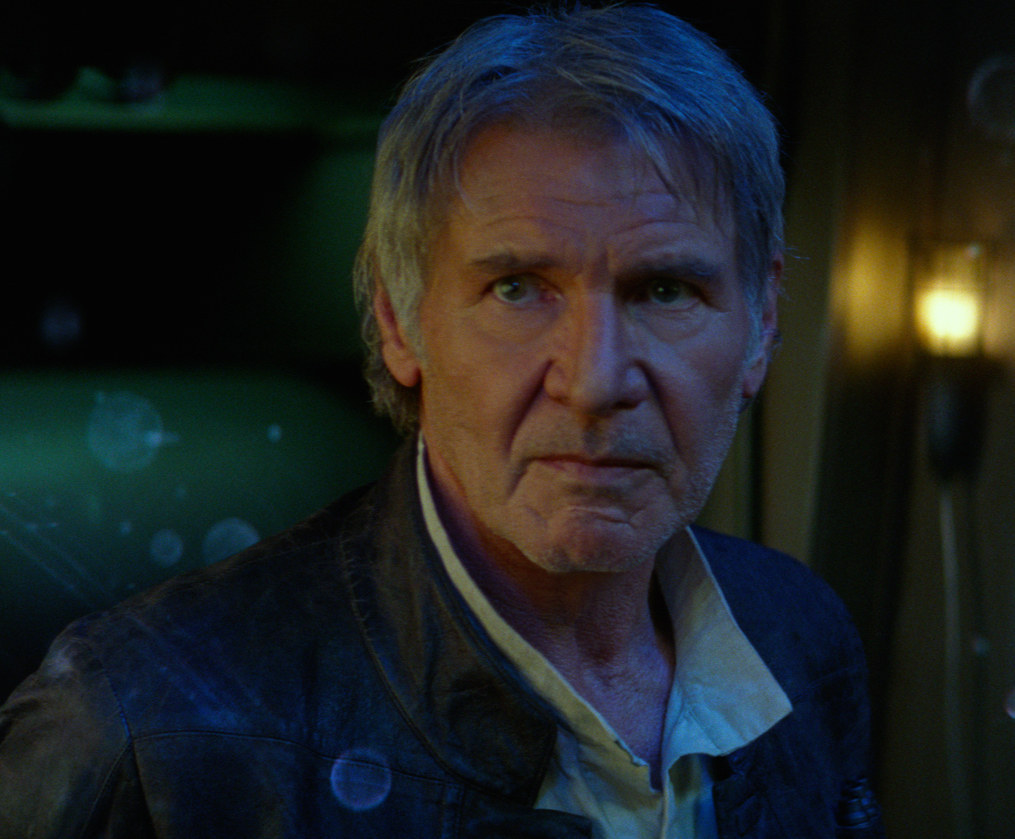
Yes, directing Star Wars — which Abrams had first watched and fallen in love with as a young fan — meant working with talent such as Williams, who was reprising his role behind the scenes. But in front of the camera, Harrison Ford, Carrie Fisher, and Mark Hamill would also return. And Abrams — who co-wrote the screenplay with Lawrence Kasdan (the writer of The Empire Strikes Back and Return of the Jedi) — had to create a new set of characters, and find the actors to play them, who could integrate with the original, beloved actors.
"The burden that is on the shoulders of the younger actors in this movie is enormous: They're stepping into a world and a spotlight, and need to shoulder not just the story in this film, but the story of what is the beginning of a new trilogy," Abrams said.
He said he thought about the brilliance in the casting of the Harry Potter movies as he began the process. "Oh my god — they cast these kids, and you look at how young they are, and you realize they just remain those characters for I think what was, like, 37 movies. They grew up — and it is a massive leap of faith," Abrams said. "Bringing them to life was a huge opportunity, but also an enormous risk and burden. Are we casting the right person? What happens if Hermione is wrong, or what happens if Ron isn't quite right?"
In his Star Wars, though, the new faces wouldn't be playing known quantities. "Which meant that these were characters that didn't have the advantage of being pre-vetted, pre-embraced, pre-loved," Abrams said. "So we needed to bring actors in who people could very quickly connect with, relate to, and sort of fall in love with."
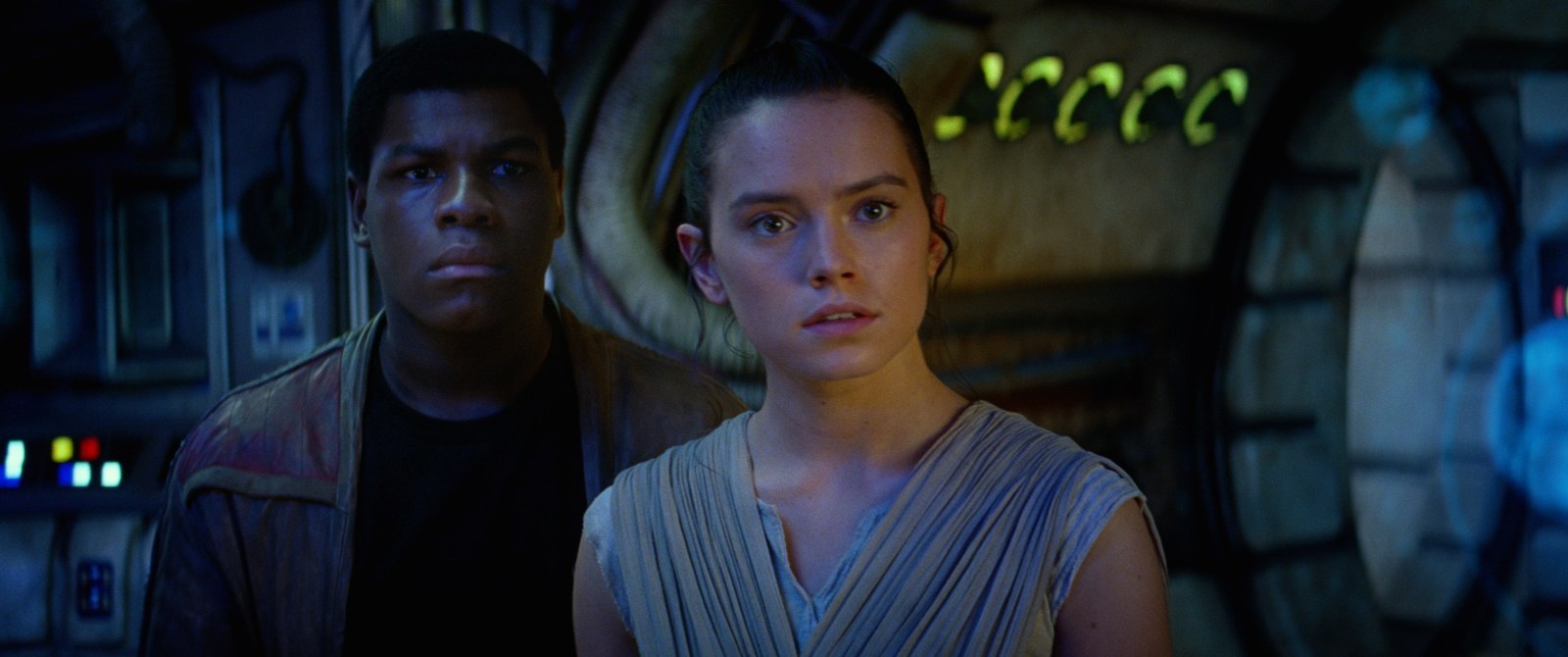
He said that it was producer Kathleen Kennedy who brought up Adam Driver's name to play Kylo Ren, The Force Awakens' villain. "I had never met him, but it was immediately an idea that made total sense, given what we wanted to do with the character," Abrams said. Casting director Nina Gold brought in Daisy Ridley, who plays Rey, the film's lead, and "we were so lucky to get to find her," Abrams said. John Boyega, whose work Abrams had admired in 2011's Attack the Block, was considered for both Finn, a stormtrooper who has gone AWOL, and Poe, a dashing rebel pilot— but he read for Finn. Abrams said: "I just found myself laughing — loving what he was doing, and he brought a kind of desperation to the role that felt very much like what I remember from the original Star Wars. These were desperate characters." So to play Poe, they pursued Oscar Isaac. "I was a huge fan of Inside Llewyn Davis, and when we went after Oscar, I had never seen him play this kind of role before," Abrams said. "We met with him, and I just fell in love with him."
"It was the very luckiest thing to get to assemble this group of people," Abrams said. "Some of whom are unknowns, some of whom are lesser known. But all of whom were awesome."
It felt, Abrams said, "wholly different" from any experience he'd had casting a movie. But it did remind him of casting Lost, the supernatural television drama he co-created in 2004. "It's easy to look back and go, Oh, well, of course that's what Charlie or Kate or Jack or Sun or Jin or Sayid would look like," he said. "But at the time, we're still writing the script as we're casting, and we started seeing all these people. You can find someone who's great, but it's not a binary exercise. You need to look at everyone together and say, ‘Here's the group — how's it gonna work?’"
And as with Lost, The Force Awakens presents a multiracial world. Abrams said he and Kasdan didn't write the script with "any look in mind, any race in mind." He wanted a woman at the story's center — an important theme of Abrams' television work that he has explored less in his movies — because it was a "very powerful idea" to him. "And it was hugely important to me that the actors in the film look the way the world looks," he said.
"We wrote these characters trying best as we could to tell a story that we would hope people would embrace," Abrams continued. "As the story we tell is hugely important, it's also incredibly important that people see themselves in those stories. It was something that definitely was on my mind. It's 2016 almost — it feels like what you need to do, what I'm compelled to do. It feels right."
"I want people to feel that this is an inclusive world," he said. "Because that's what I felt when I saw Star Wars originally. The Force binds all living things together —not just white dudes."
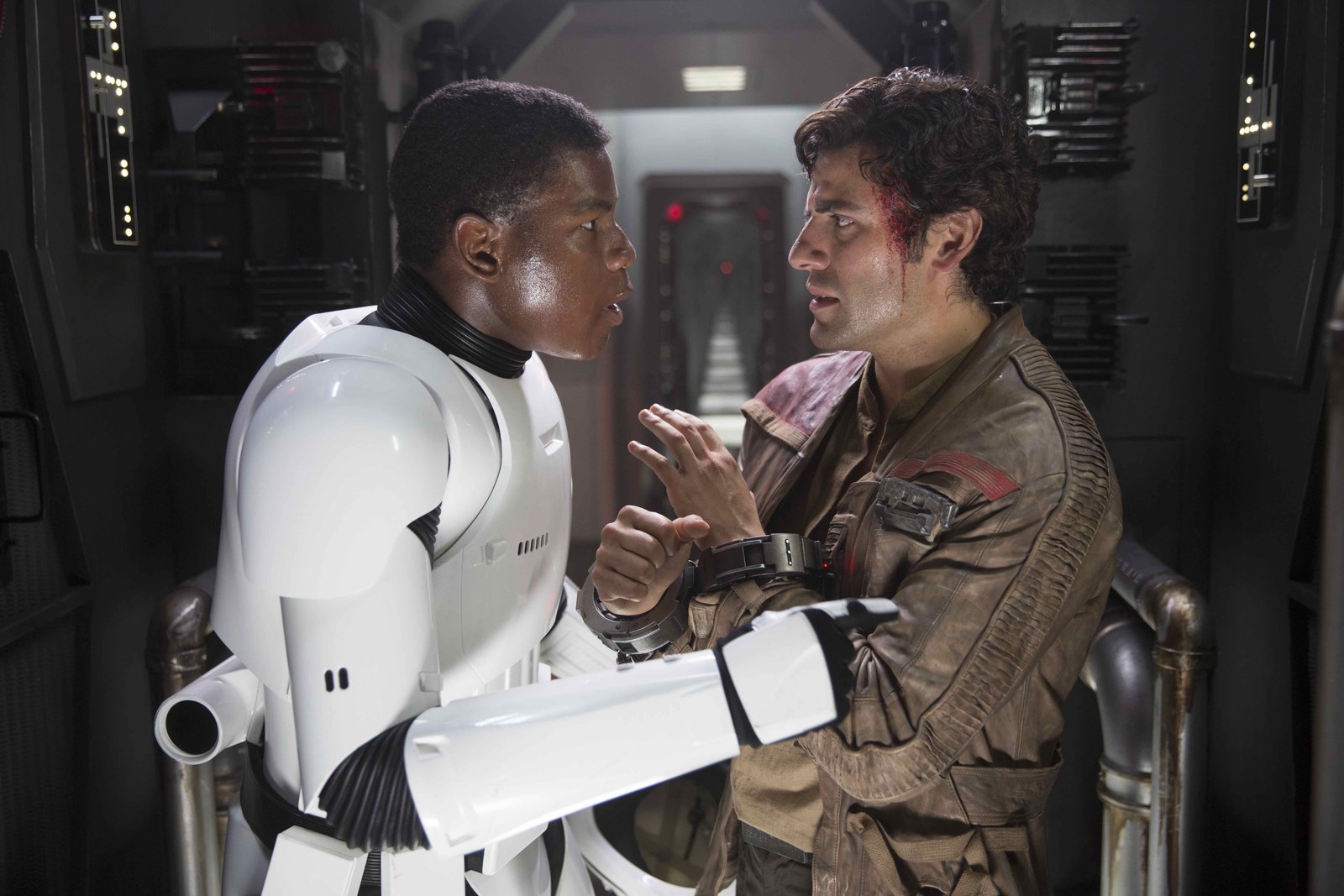
Inheriting the most important film franchise of all-time — of course it's a lot. And Abrams is trying to block out the hysteria that comes along with this project. "We're just making a movie," he said. "And the noise in the case of Force Awakens, expectations for it being the best Star Wars movie ever, or it's going to make $600 million in the first weekend — all those things are wonderful that people care enough to want to see it. And also soul-crushing."
Abrams sought an apt comparison. "The first time I ate a Dove Bar, one of those ice cream chocolate bars, it was a religious experience," he said. "It was the best thing I had ever had in my life! And I couldn't believe that a taste like that, an experience like that, could exist in a food product. This was a long time ago, and I remember the experience was earth-shattering." Then: "And the second time I had a Dove Bar —" he took a significant pause — "it was really good! But the first time changed the way I looked at the world, you know what I'm saying?"
In other words: "There's no way it can be the first and best Star Wars movie. There's no way it can be as good as what happened."
But Abrams is familiar with these sorts of pressures. He began his feature film directing career stepping into Mission: Impossible, a blockbuster film series that was trying to right itself — a very different experience from Star Wars, but with its own trappings.
"The noise of what's happening behind the scenes, the noise of what people expect from something, the noise of what the star might be going through personally or professionally — all these things are not necessarily enormous prices to pay for the opportunity to be involved in these things at all," Abrams said. "It would of course be wonderful if a movie didn't have to have the baggage of the movie, but I would never in a million years trade any of the experiences that I've had on any of these projects — including this one — because of that noise."
